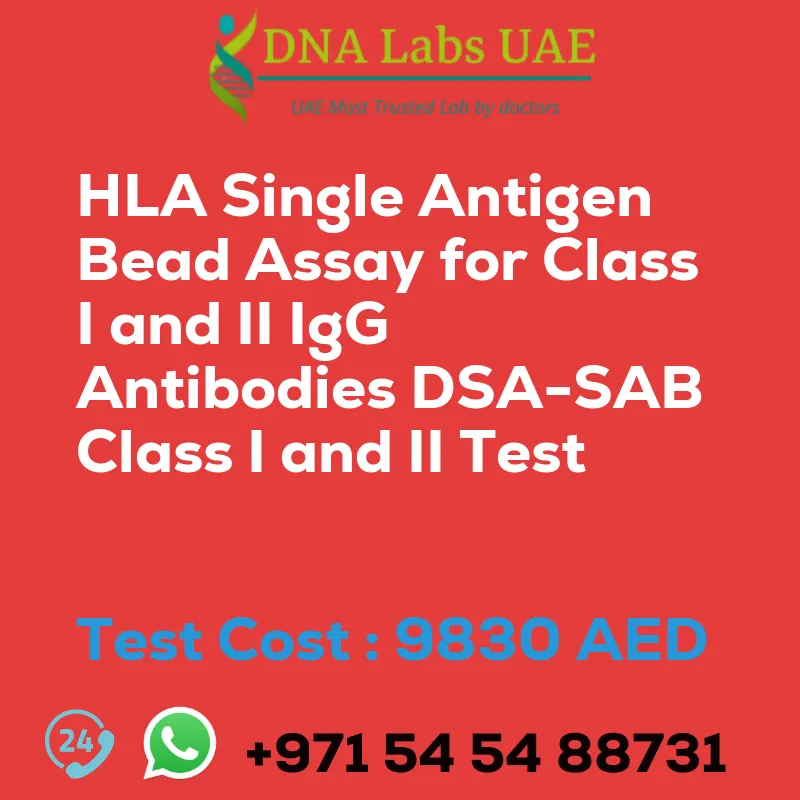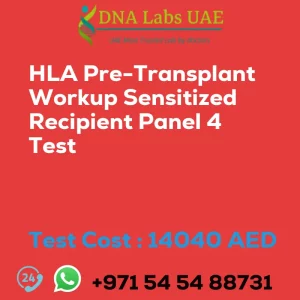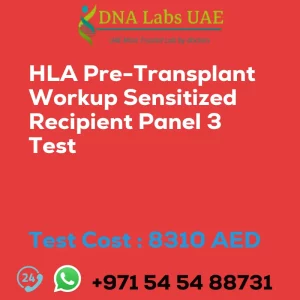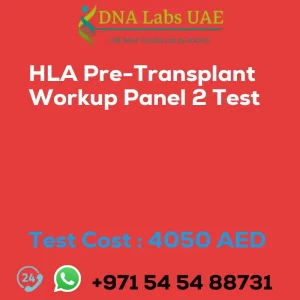HLA Single Antigen Bead Assay for Class I and II IgG Antibodies DSA-SAB Class I and II Test Price 9830 AED
The Human Leukocyte Antigen (HLA) Single Antigen Bead (SAB) Assay for Class I and II IgG Antibodies is a specialized test used to detect donor-specific antibodies (DSAs) in patients, particularly those undergoing organ transplantation. This article provides a comprehensive overview of the test, its importance, and what to expect when getting tested in the UAE.
What is the HLA Single Antigen Bead Assay?
The HLA Single Antigen Bead Assay (SAB) is a laboratory test that identifies antibodies against specific HLA molecules. HLA molecules are proteins on the surface of cells that play a critical role in the immune system’s ability to distinguish between self and non-self. In the context of organ transplantation, the presence of DSAs can lead to organ rejection, making this test crucial for transplant compatibility.
Symptoms Indicating the Need for the HLA Single Antigen Bead Assay
While the HLA SAB test is primarily used in the context of organ transplantation, certain symptoms and situations may indicate the need for this test:
- Pre-Transplant Screening: Patients awaiting organ transplantation may undergo this test to identify any pre-existing DSAs that could affect transplant success.
- Post-Transplant Monitoring: After transplantation, patients might be tested to monitor for the development of DSAs, which can signal potential organ rejection.
- Unexplained Organ Dysfunction: In patients with unexplained organ dysfunction post-transplant, the presence of DSAs could indicate immune-mediated injury to the transplanted organ.
Components of the HLA Single Antigen Bead Assay
The HLA Single Antigen Bead Assay consists of several key components that ensure accurate and comprehensive detection of antibodies:
- Beads Coated with Single HLA Antigens: The assay uses beads, each coated with a single, specific HLA antigen. This allows for precise identification of antibodies against individual HLA molecules.
- Fluorescent Markers: These markers bind to antibodies present in the patient’s serum. The degree of fluorescence correlates with the amount of antibody present.
- Flow Cytometer or Luminex Technology: The beads are analyzed using flow cytometry or Luminex technology, which quantifies the fluorescent signals and provides detailed information about the presence and strength of antibodies against each HLA antigen.
Test Details
- The HLA Single Antigen Bead assay is a laboratory test that is used to detect the presence of antibodies in the blood that target specific human leukocyte antigens (HLA). These antigens are found on the surface of cells in the body and are important for the immune system’s ability to distinguish self from non-self.
- The assay is performed using beads that are coated with specific HLA antigens. The patient’s serum is then added to the beads and any antibodies that are present in the serum will bind to the beads. The beads are then washed and labeled with a fluorescent dye that allows for detection of the bound antibodies.
- The test is used to identify the presence of donor-specific antibodies (DSA) in patients who have received organ transplants. DSA can lead to rejection of the transplanted organ and can cause serious complications for the patient.
- The HLA Single Antigen Bead assay is available for both class I and class II HLA antigens and is a highly sensitive and specific method for detecting DSA. It is considered the gold standard for DSA detection and is used by transplant centers around the world to monitor patients who have received organ transplants.
Procedure
The HLA Single Antigen Bead Assay involves several steps to ensure accuracy and reliability:
- Blood Sample Collection: A blood sample is drawn from the patient, from which serum is separated.
- Incubation: The serum is incubated with the beads coated with specific HLA antigens. If antibodies against these antigens are present in the serum, they will bind to the beads.
- Washing and Detection: After incubation, the beads are washed to remove unbound antibodies. Fluorescently labeled anti-human IgG antibodies are then added to detect bound antibodies.
- Analysis: The beads are analyzed using flow cytometry or Luminex technology, providing a detailed profile of the antibodies present.
Results Interpretation
- Positive Result: A positive result indicates the presence of DSAs, which could affect transplant compatibility or signal potential rejection in post-transplant patients.
- Negative Result: A negative result suggests the absence of significant DSAs, indicating a lower risk of antibody-mediated rejection.
Importance of the HLA Single Antigen Bead Assay in the UAE
In the UAE, where organ transplantation is a growing field, the HLA Single Antigen Bead Assay plays a critical role in improving transplant outcomes. By providing detailed information about a patient’s antibody profile, this test helps healthcare providers:
- Enhance Transplant Compatibility: Identifying potential immunological barriers before transplantation ensures better matching between donors and recipients.
- Monitor Post-Transplant Health: Regular monitoring of DSAs post-transplant can lead to early detection of potential rejection, allowing for timely intervention.
- Improve Long-Term Outcomes: Reducing the risk of rejection and graft loss contributes to better long-term health and quality of life for transplant recipients.
Conclusion
The HLA Single Antigen Bead Assay for Class I and II IgG Antibodies is an essential tool in the field of organ transplantation. Its ability to detect donor-specific antibodies with high precision helps in making informed decisions regarding transplant compatibility and post-transplant care. For residents of the UAE, especially those undergoing or considering organ transplantation, understanding the significance and details of this test is crucial for ensuring the best possible outcomes. If you are in need of this test, consult with your healthcare provider to understand how it fits into your overall transplant plan.
Test Name: HLA SINGLE ANTIGEN BEAD ASSAY FOR CLASS I and II IgG ANTIBODIES DSA-SAB CLASS I and II Test
Components: Price 9830.0 AED
Sample Condition: 2 mL (1 mL min) serum from 1 SST. Ship refrigerated or frozen. Give brief clinical history.
Report Delivery: 10-12 days
Method: Luminex X-Map technology
Test Type: Transplantation
Doctor: Nephrologist
Test Department: Pre Test Information. Give brief clinical history.
| Test Name | HLA SINGLE ANTIGEN BEAD ASSAY FOR CLASS I and II IgG ANTIBODIES DSA-SAB CLASS I and II Test |
|---|---|
| Components | |
| Price | 9830.0 AED |
| Sample Condition | 2 mL (1 mL min) serum from 1 SST .Ship refrigerated or frozen. Give brief clinical history. |
| Report Delivery | 10-12 days |
| Method | Luminex X-Map technology |
| Test type | Transplantation |
| Doctor | Nephrologist |
| Test Department: | |
| Pre Test Information | Give brief clinical history. |
| Test Details | The HLA Single Antigen Bead assay is a laboratory test that is used to detect the presence of antibodies in the blood that target specific human leukocyte antigens (HLA). These antigens are found on the surface of cells in the body and are important for the immune system’s ability to distinguish self from non-self.
The assay is performed using beads that are coated with specific HLA antigens. The patient’s serum is then added to the beads and any antibodies that are present in the serum will bind to the beads. The beads are then washed and labeled with a fluorescent dye that allows for detection of the bound antibodies. The test is used to identify the presence of donor-specific antibodies (DSA) in patients who have received organ transplants. DSA can lead to rejection of the transplanted organ and can cause serious complications for the patient. The HLA Single Antigen Bead assay is available for both class I and class II HLA antigens and is a highly sensitive and specific method for detecting DSA. It is considered the gold standard for DSA detection and is used by transplant centers around the world to monitor patients who have received organ transplants. |







